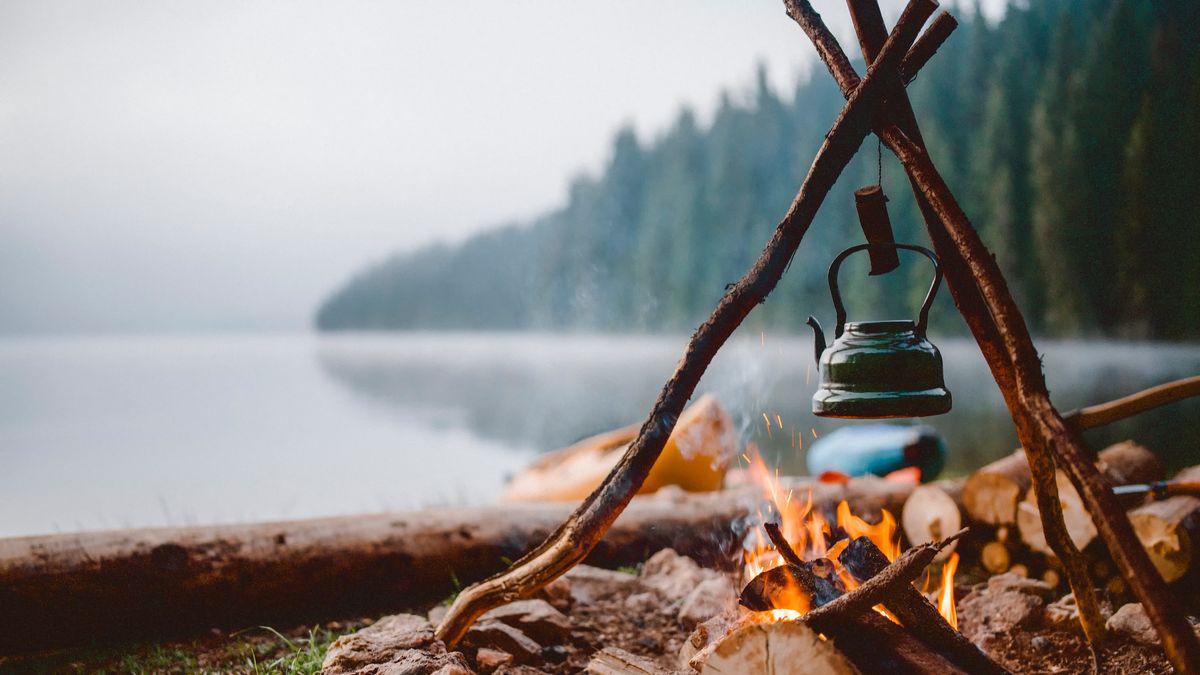
Why does wood catch fire, but metal doesn't?
It's all in the chemical bonds.

Imagine sitting in front of a campfire. A smoky scent wafts through the air as a pot of soup simmers over the open flame. While you stare at the flickering orange tongues, you might wonder: Why are the wood logs on fire, but the metal pot isn't?
The reason why some things catch fire and other things don't comes down to their chemical bonds and the energy it would take to change or break those bonds.
But first, here's a primer on fire itself. Fire needs a few things to exist: oxygen, heat and fuel.
Oxygen is a gas that's in the air. Heat can be created with friction, like when you strike a match, or it can be created in other ways, such as a lightning strike. Fuel is the thing that burns: Generally, this can be anything made up of organic material, Carl Brozek, a chemist at the University of Oregon, told Live Science. In this case, "organic" refers to molecules that are made of primarily carbon-hydrogen bonds and sometimes include oxygen or other atoms, such as phosphorus or nitrogen.
Related: What makes something fireproof?
Specifically, burning is a chemical reaction that releases energy from an unstable system with relatively weak chemical bonds. Everything wants to be more stable, especially organic molecules that contain carbon, oxygen, hydrogen and a few other elements, Brozek said. Materials like wood and paper, which catch fire easily, are made of cellulose — a molecule composed of bonds between carbon, hydrogen and oxygen.
And when something burns, it ends up "releasing a lot of energy because now you're moving the system to a lower energy state," Brozek said. "And that energy has to go somewhere."
Sign up for the Live Science daily newsletter now
Get the world’s most fascinating discoveries delivered straight to your inbox.
When an object made of wood catches fire, the cellulose that makes up the wood is converted to carbon dioxide and water vapor — both very stable molecules with strong bonds. The energy released by this chemical reaction excites the electrons in the atoms of gas, which in turn emit visible light. That light appears to us as a flame, Brozek said.
Back to the burning log versus the hot pot of soup: The difference between a log and a metal pot has to do with how well the material can distribute the energy involved when fire is applied to it, Brozek said, which comes down to how strong its chemical bonds are. The strong chemical bonds in metal can't be broken easily. A piece of wood, meanwhile, lacks those strong bonds, so it doesn't have the capacity to absorb the energy from the flame. Instead of absorbing the energy, the wood releases the energy by catching fire. But the metal in the pot "has a huge capacity to absorb that energy and dissipate it," which is why the pot will feel hot to the touch.
Better absorption of heat can also stop wood from catching fire. If a flame were applied to a paper cup filled with water, the cup wouldn't burn, Brozek said. Because the water in the cup can absorb the heat, the paper won't catch fire. (Although we don't recommend you try this yourself.)
Some metals, however, do burn. Such "combustible metals," including potassium and titanium, are used to make fireworks. The metals in fireworks are in powder form, which provides more surface area for it to react much faster with heat and oxygen, Brozek said. When those metals are exposed to sufficient heat to react with oxygen, the amount of energy released causes them to burn in different colors.
Originally published on Live Science.

JoAnna Wendel is a freelance science writer living in Portland, Oregon. She mainly covers Earth and planetary science but also loves the ocean, invertebrates, lichen and moss. JoAnna's work has appeared in Eos, Smithsonian Magazine, Knowable Magazine, Popular Science and more. JoAnna is also a science cartoonist and has published comics with Gizmodo, NASA, Science News for Students and more. She graduated from the University of Oregon with a degree in general sciences because she couldn't decide on her favorite area of science. In her spare time, JoAnna likes to hike, read, paint, do crossword puzzles and hang out with her cat, Pancake.












